| Photos: Heavier rail in Japan (819247) | |||
|
|
|||
| Home > SubChat | |||
|
[ Read Responses | Post a New Response | Return to the Index ] |
|
||
Photos: Heavier rail in Japan |
|
|
Posted by Deaks on Mon Aug 10 10:35:35 2009, in response to Photos: Light rail in Japan, posted by Deaks on Sat Jul 25 16:23:20 2009. So, following the tram/light rail shots from Japan, here are some of the heavier Japan Railway and Metro kit.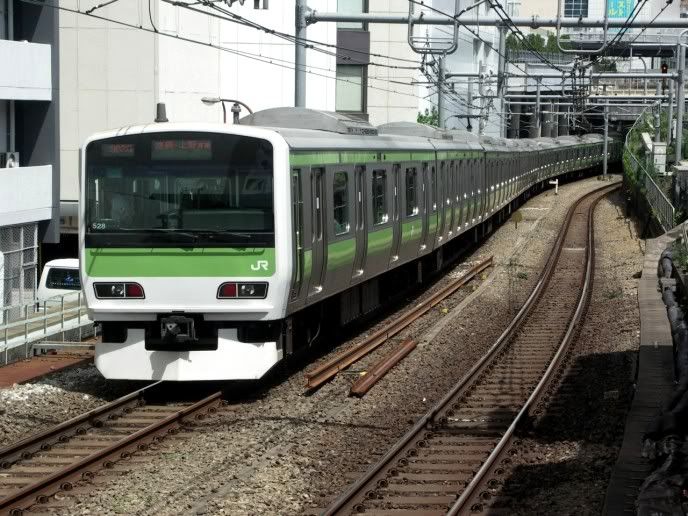 This is the well-known Yamanote Line. It runs in a circle around the centre of Tokyo about every 3-4 minutes or so, and a full circuit takes around an hour as I remember. These cars would seem to be reasonably new, and the air-conditioning on them is (fortunately) excellent. 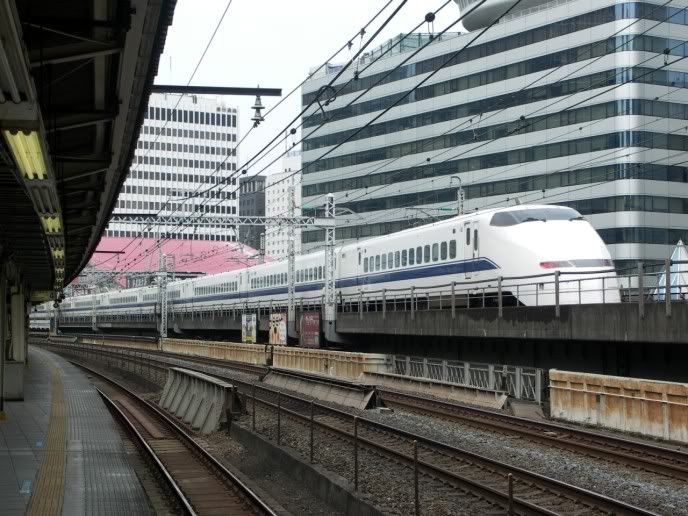 'Shinkansen' run on their own separate tracks, on account of being standard gauge rather then the metre gauge of other JR lines. In central Tokyo you can see them adjacent to the conventional platforms. I rode on one like this from Tokyo to Osaka. The ride standard at full speed is excellent, it being difficult to tell that the train is even moving.  Tokyo Metro train. It is on the Maranouchi Line, I think approaching Myogadani station. This was one of only a couple of open-air spots I encountered on Tokyo Metro tracks, although their trains also run through to JR lines in the open.  Another Bullet Train, this time one of the latest Nozomi 700 types. This is nearing the end of its journey to Tokyo, the picture being taken from the Yurikamome Line station at Shimbashi. Bullet trains pass here with a frequency similar to a subway line. 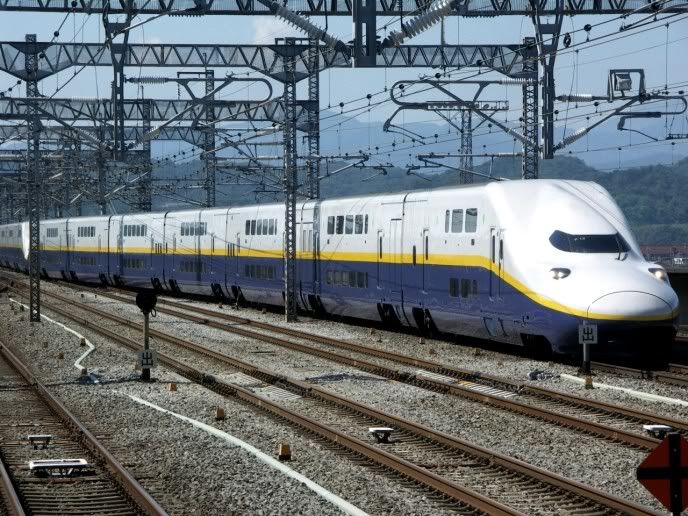 One day I visited the railway museums at both Usui Pass and Omiya. Omiya is easily accessible to the north of Tokyo but Usui Pass is a little further away. I rode on one of these MAX Shinkansen to Takasaki.... 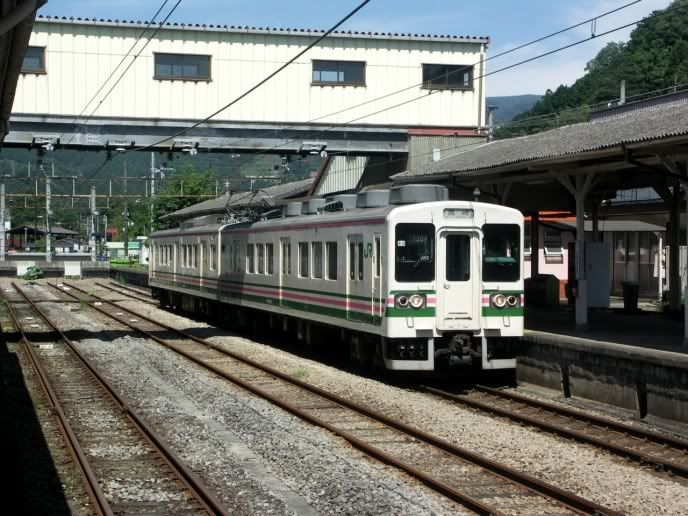 ...then this little unit to the end of the line up the Usui Pass. The line is very steep, formerly being a rack railway with a 6.6% grade. The museum has several of the rack locomotives used when it was still a main line, in varying conditions. The EMU struggled somewhat ascending the pass but it was plain sailing back down later on.  After finishing up at Usui Pass I headed back towards Omiya, with a stop at the intermediate Shinkansen station for a couple of pictures. These are the only type of 'old school' Bullet Trains still in use I think, relegated to stopping services on the line north from Tokyo. 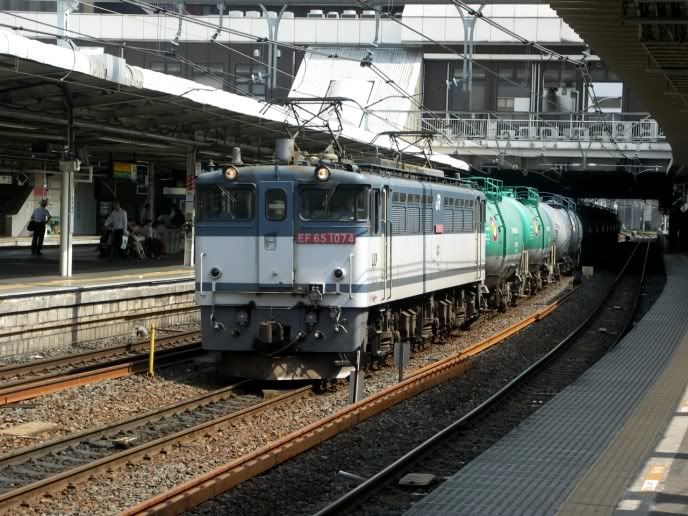 The railway museum at Omiya is near to the station, accessed via a rubber-tyre people mover type thing. Omiya has some freight action too, such as this EF65 loco of JR. 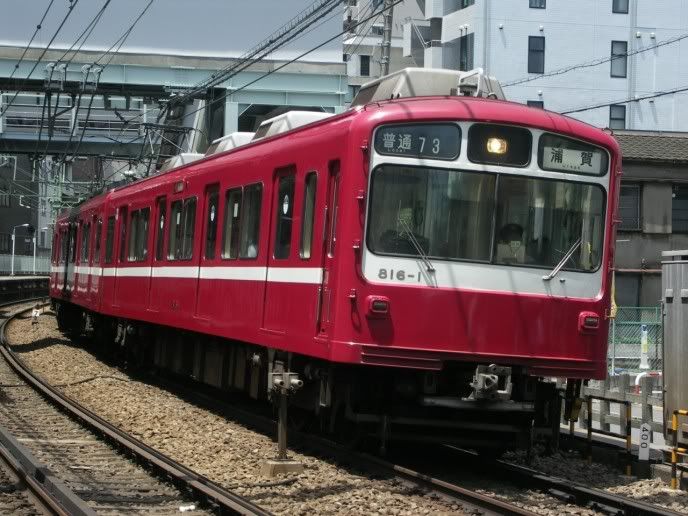 The Keikyu Railway is a private operator in Yokohama and Tokyo. It operates trains between and around the two cities, and to the airport at Haneda. Unlike the Tokyo Metro, some of its cars appear pretty old, such as this one heading over one of the multitude of grade crossings, near Shinagawa. 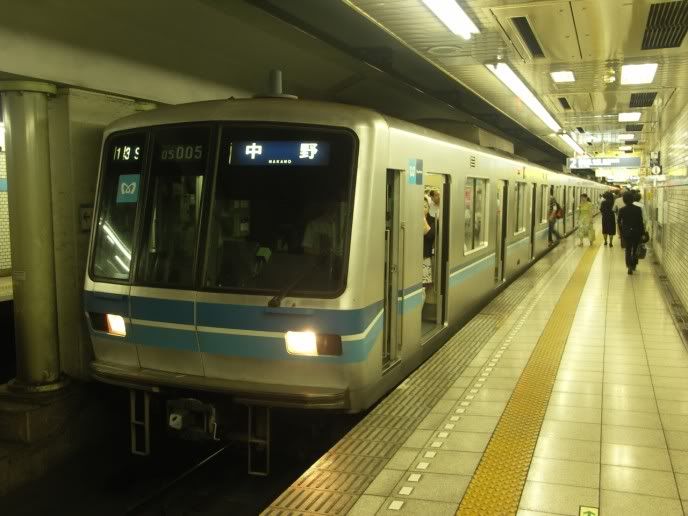 Tokyo Metro car, on the Tozai Line. 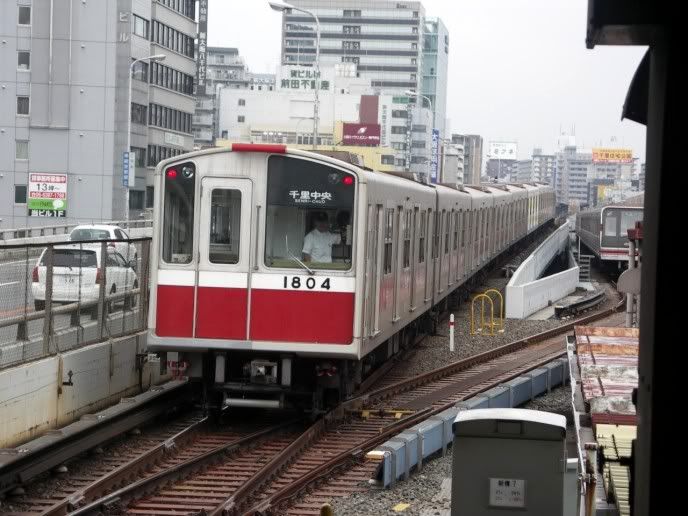 Then it was on to Osaka. Here's one of their subway trains, departing from Shin-Osaka, which is where you have to go to catch the Bullet Train. They are colour-coded for the line....  ....another one, near the Port area. 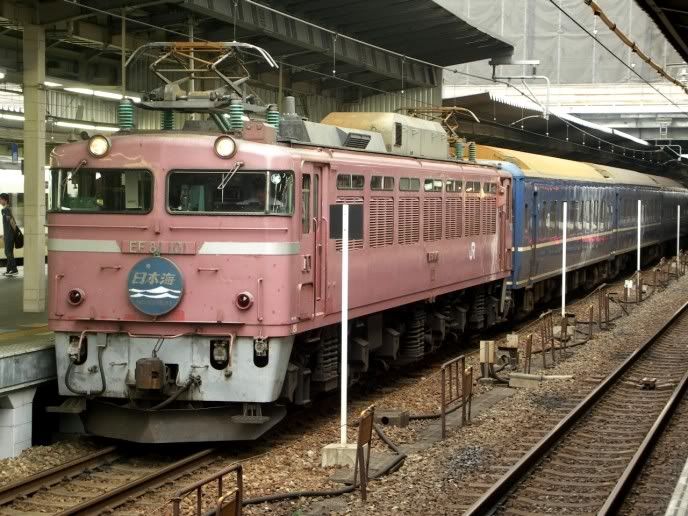 Like Tokyo, Osaka is served by a couple of sleeper services to northern Japan. This is the morning arrival. 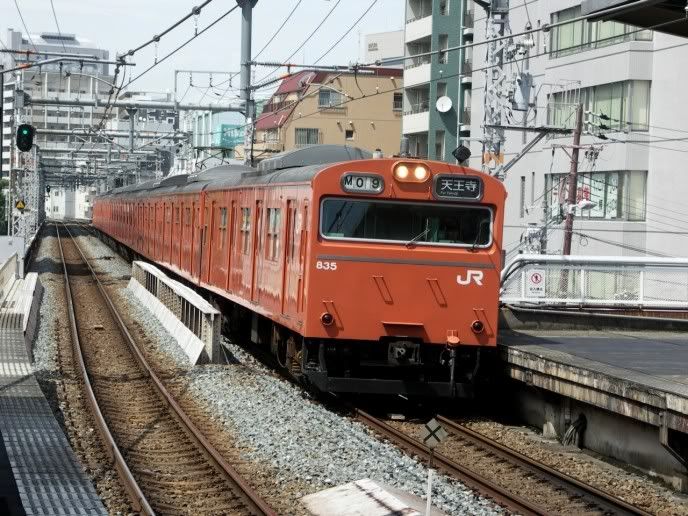 Osaka has a loop line as well, served by these older orange EMUs every few minutes. Some divert off the loop to head towards the Universal Studios area. 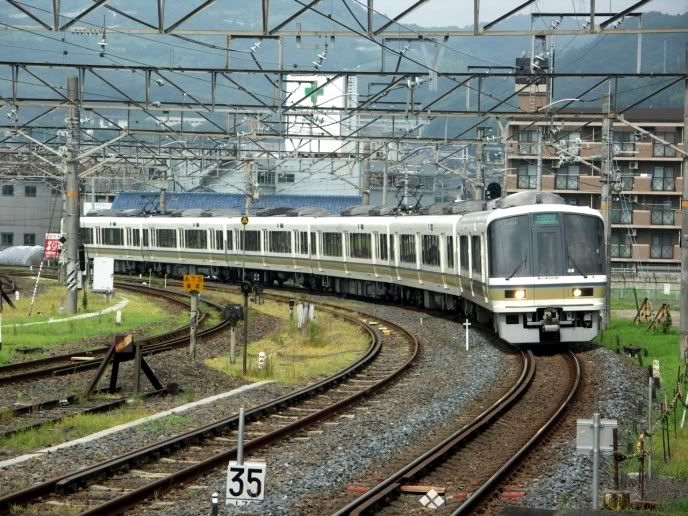 This type of EMU is much in evidence in the Kansai area. I cannot for the life of me remember what this station is called, but it was pretty rural albeit quite busy for a Saturday morning. 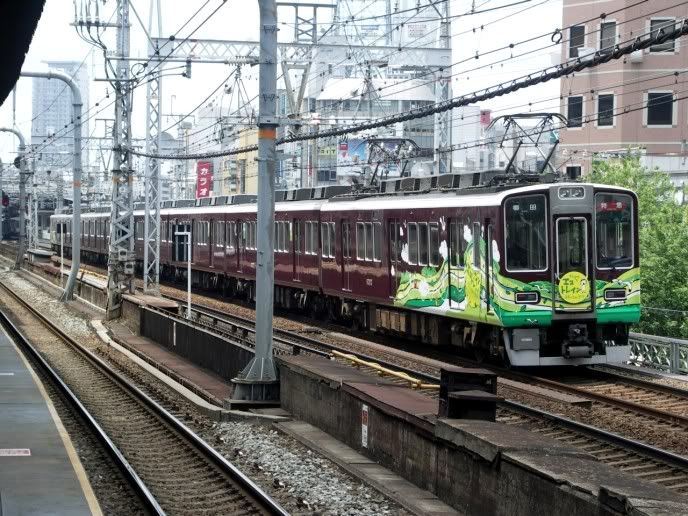 Hankyu Corporation operate a number of lines in the Kansai area too, seemingly competing with JR between several destinations. This Hankyu train is passing one of JR's stations in Kobe, having just left the Hankyu terminal. Having a Japan Rail Pass I didn't ride too many of the private operators. 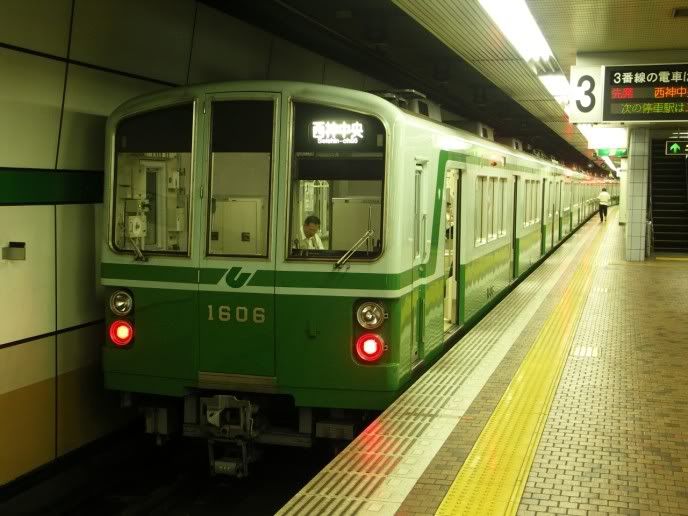 Kobe has a two-line subway. This is taken at Shin-Kobe, the Bullet Train station which is also the one to serve the rather white-knuckle cable car/'ropeway' up the mountain overlooking Kobe. 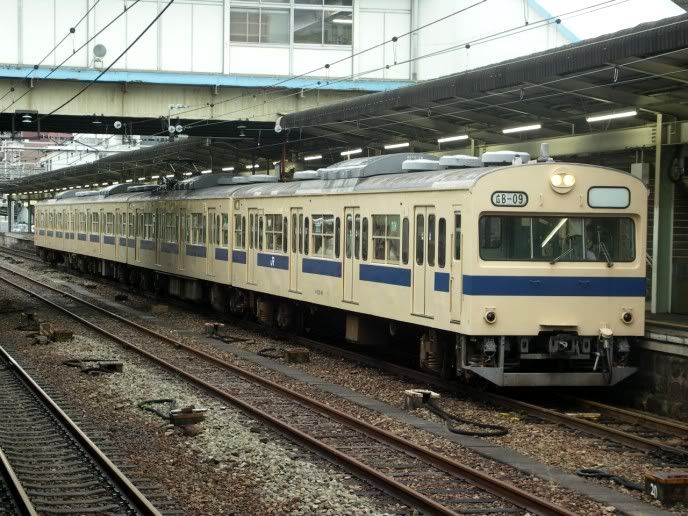 To finish off, this is an older JR West EMU in Hiroshima station. Some of these have no conductor, and it would seem that at some stations it is necessary to pay the driver/motorman the fare, at least as far as I could understand. |